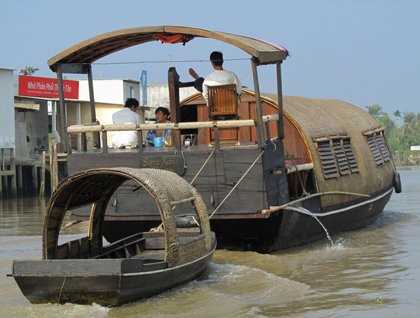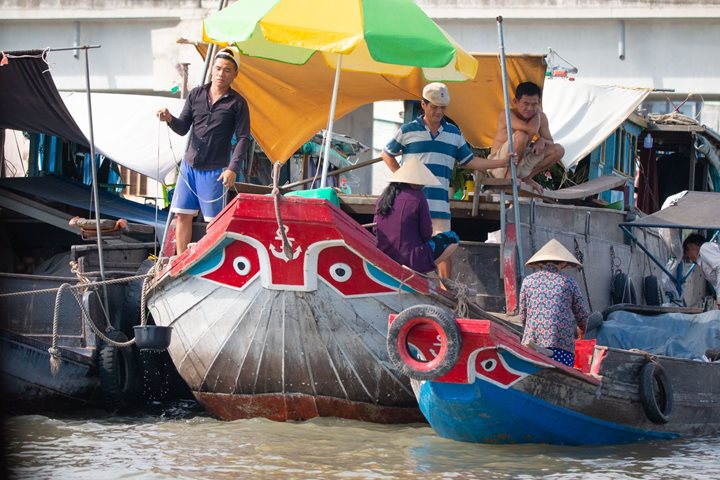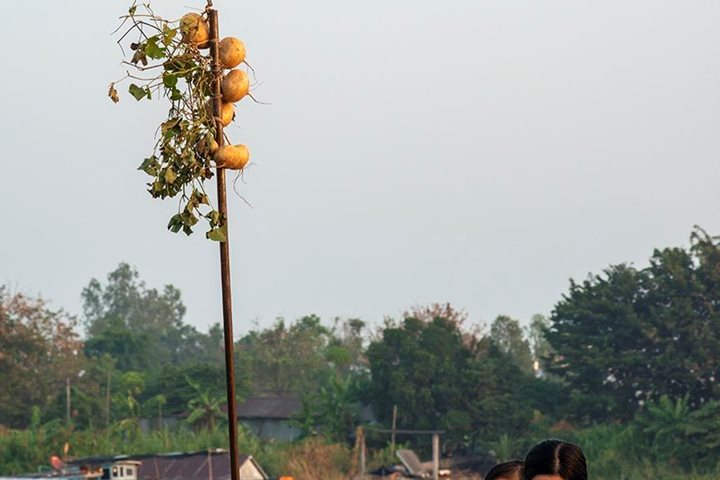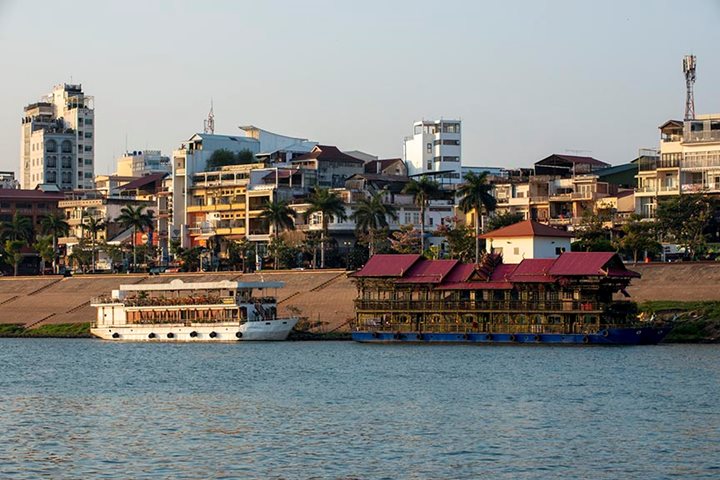Opening the curtains in the morning is always a confusing sensation. Looking first at clumps of water hyacinths drifting by on the current, one wonders is the ship moving or is it the river, flowing towards the sea. Looking at the hazy embankment in the distance, it becomes clear we are still stationary, safely anchored, the engines still quiet.
This morning’s excursion, by covered sampan boats, is to Binh Thanh Island. The older generation lives in pleasant seclusion on the island, while the younger generation finds higher education and employment in the city. Ferries do connect the island to other parts of the Mekong Delta, but some of the elders are quite happy with a visit to Saigon only once or twice in their lifetime. In the local community temple, dedicated to the guardian spirit, we meet two of the caretakers in their 70s, who are pleased to welcome us and share some of their experiences of island life. Rush mat weaving seems to be a major cottage industry, done by teams of two people, while the older children help out with the finishing touches.
Moving further down in the Mekong Delta we drop anchor for a visit by sampan boats to the busy trading hub of Cai Be both on and off the water. The buying and selling from the middlemen boats, laden with watermelons and pineapples, transporting and transferring of wares from boats to shore storage houses, everyone is moving and engaged in activities. The only “foreign” structure in this water dominated world is the tall spire of the French built early 20th Catholic Church, reminding us again of the colonial period and French domination, emphasized by its central location in Cai Be. Religions mix in the Delta, where the main religion is Buddhism. In addition, there is the syncretic Cao Dai, ancestor worship, respect for local guardian spirits, Gods of Prosperity and Luck, and the Water Dragon, lord of the water and provider of plentiful fish.
If we pride ourselves for our recent efforts towards recycling, the Vietnamese are way ahead of us. Rice has multiple uses, besides being the main staple, rice husks can be used for fuel, and the rice bran can be used for animal feed. Rice can be cooked, made into noodles or flour, used in the making of the thin wrappers for salad rolls. Rice can be popped in hot sand and mixed with malt sugar and nuts, to be made into a kind of candy. Cooked rice with yeast can be made into a distilled clear liquor, commonly known as rice wine.
The Jahan lifted anchor, picked up speed for the final 25 miles down the Mekong to My Tho, its final destination. In beautiful late afternoon light we celebrated our journey from Cambodia down into Vietnam along the Mekong, two very different and contrasting cultures, but bound together by history.







